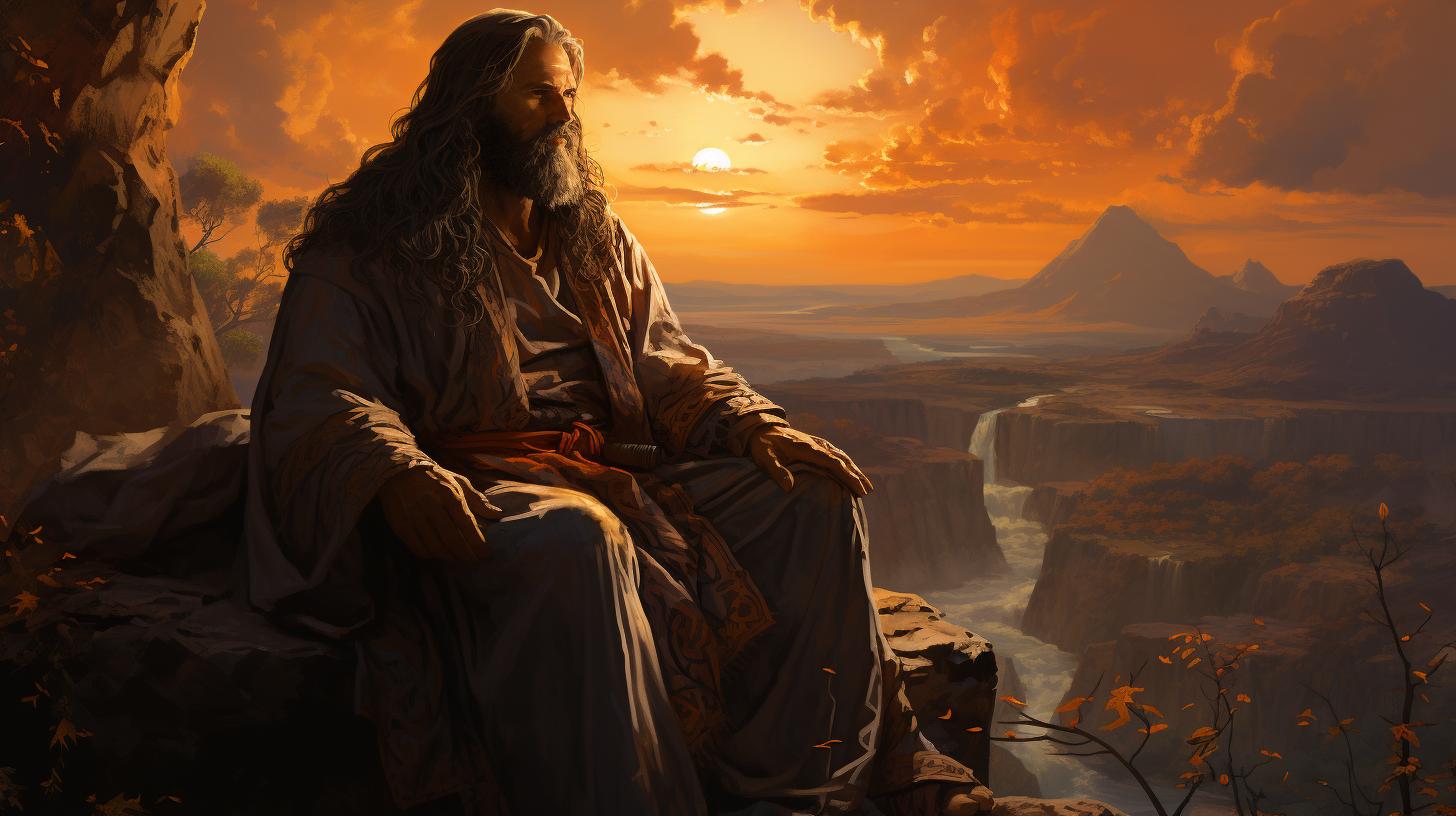Kothar wa Khasis: The Prominent Ugaritic Deity and Master Craftsman

Kothar wa Khasis, a prominent deity in Ugaritic mythology, holds a significant role as the god of fire, steel, and stone. This skilled craftsman is associated with the construction of temples and palaces, and is revered for his expertise in various arts and crafts.
With connections to Phoenician and Egyptian mythology, Kothar wa Khasis showcases a rich cultural and historical legacy. In this article, we explore the origins and significance of Kothar wa Khasis, his role in myths and legends, and his artistic influence throughout history.
Additionally, we examine modern interpretations and the continued relevance of this Ugaritic deity.
Understanding the Ugaritic Deity
The Origins and Name of Kothar wa Khasis
Kothar wa Khasis, a prominent deity in Ugaritic mythology, has a rich history and origin rooted in the ancient cultures of Phoenicia, Canaan, and Israel. The name ‘Kothar wa Khasis’ represents the combination of two distinct deities, Kothar and Khasis.
Their worship and reverence extend across different regions, including Turkey, Syria, Lebanon, and Israel, among various ancient civilizations such as the Phoenicians, Canaanites, and Jews.
Significance of Kothar wa Khasis in Ugaritic Mythology
In the Ugaritic pantheon, Kothar wa Khasis holds a significant role as a skilled craftsman and has a diverse set of attributes and abilities.
Revered as an adept architect, blacksmith, musician, and magician, this deity embodies the mastery of various arts and crafts. Kothar wa Khasis is mentioned extensively in ritual texts and invoked through different theophoric names.
His association with Memphis and Caphtor reflects the trade routes and exchange of craftsmanship during the Late Bronze Age.
The Role of Kothar wa Khasis as God of Fire, Steel, and Stone
Kothar wa Khasis is particularly revered as the god of fire, steel, and stone, showing his connection to the elemental forces and material resources necessary for artistry and construction.
His role as a divine patron and master craftsman is evident in various mythological narratives. For instance, in the Baal Cycle, El, the chief god, seeks Kothar wa Khasis’ assistance in building a temple for Yam, the god of the sea.
Additionally, Kothar wa Khasis aids Baal in his battle against the deity of the sea by providing him with mighty weapons. He is also involved in constructing the palace for the weather god and preparing gifts for the goddess Athirat.
This understanding of Kothar wa Khasis as a multifaceted deity with significant roles in Ugaritic mythology deepens our insight into the religious beliefs and practices of the ancient Near East during the Bronze Age.
Kothar wa Khasis in Comparative Mythology
Understanding the connections between Kothar wa Khasis and other deities in Phoenician and Egyptian mythology sheds light on the significance of this Ugaritic deity. Exploring these relationships reveals fascinating parallels and possible influences on ancient religious beliefs and practices.
Connections with Other Deities in Phoenician and Egyptian Mythology
In Phoenician mythology, Kothar wa Khasis shares resemblances with a figure known as Ptah, the Egyptian god of craftsmanship. This connection suggests a potential cultural exchange or shared origins between these deities.
The similarities found in their roles as creators and artisans provide valuable insights into the cross-pollination of religious ideas in the ancient world.
Comparisons to Hefesto, the Greek God of Craftsmanship
When studying Kothar wa Khasis in comparative mythology, it becomes evident that he correlates closely to Hefesto, the Greek god of craftsmanship.
Both deities possess remarkable skills in the arts, particularly in metalworking and construction. The shared cultural influence and similarities in their mythological roles further emphasize the cross-cultural connections between ancient civilizations.
The Mythological Role of Kothar wa Khasis
Kothar wa Khasis plays a significant role in Ugaritic mythology, appearing in various legends and stories. His influence can be seen prominently in the Baal Cycle, where he assists the god El in constructing a temple for Yam, the god of the sea.
Additionally, Kothar wa Khasis aids Baal in his battle against the sea god, providing him with weapons that ensure his victory.
Kothar wa Khasis in the Baal Cycle
In the Baal Cycle, Kothar wa Khasis is an indispensable figure, serving as a master craftsman and aiding the gods in their struggles. He is called upon by El to build a temple for Yam, showcasing his architectural prowess.
Later, he supports Baal, providing him with powerful weapons that enable him to defeat Yam and establish his dominion over the sea.
The Influence of Kothar wa Khasis in Ugaritic Texts
Throughout various Ugaritic texts, Kothar wa Khasis’s presence and contributions are mentioned, highlighting his importance in the mythology.
He is invoked for his magical abilities and renowned craftsmanship, which are attributed to his role as a deity closely associated with fire, steel, and stone.
Other Legends and Stories Associated with Kothar wa Khasis
Beyond the Baal Cycle, Kothar wa Khasis appears in additional legends and stories in Ugaritic mythology.
His skills as a divine artisan are further explored, and he is recognized for his role in the construction of temples and palaces. His association with various artistic endeavors solidifies his reputation as a significant deity within the Ugaritic pantheon.
The Artistic Significance of Kothar wa Khasis
Within Ugaritic mythology, Kothar wa Khasis holds immense artistic significance, particularly in the realms of architecture, craftsmanship, and symbolism. He is revered for his role in the construction of temples and palaces, his patronage of various arts and crafts, and the rich symbolism associated with his representations in art.
The Construction of Temples and Palaces
Kothar wa Khasis is widely recognized for his prowess in architectural endeavors. He is often invoked for his expertise in building temples and palaces, which highlights his integral role in promoting religious and political structures of power.
His craftsmanship and attention to detail are renowned, resulting in magnificent structures that serve as testament to his skill.
Kothar wa Khasis as Patron of the Arts and Crafts
Beyond his architectural endeavors, Kothar wa Khasis serves as a patron of various arts and crafts. He is revered as a master of diverse artistic disciplines, including metalworking, woodworking, and musical composition.
His influence extends to the realm of craftsmanship, inspiring artisans to create exquisite works that reflect his creative spirit and technical expertise.
Symbolism and Representations of Kothar wa Khasis in Art
In artistic representations, Kothar wa Khasis is often depicted with symbols that represent his multifaceted nature.
He is commonly portrayed wielding tools such as hammers, chisels, and musical instruments, symbolizing his mastery of craftsmanship and music. These symbols serve as visual markers of his artistic prowess and highlight his association with creativity, innovation, and skillful manipulation of materials.
Kothar wa Khasis in Historical Context
Kothar wa Khasis, the Ugaritic deity known for his craftsmanship, played a significant role in the ancient Near Eastern culture. His influence extended beyond the borders of Ugarit, leaving traces in the neighboring regions and civilizations.
Through diverse textual references and archaeological discoveries, we can explore the impact of Kothar wa Khasis on the historical context of the time.
The Influence of Kothar wa Khasis on Ancient Near Eastern Culture
Kothar wa Khasis, revered for his skills in construction and design, had a profound impact on the ancient Near Eastern culture. His craftsmanship and expertise influenced the architectural styles, techniques, and aesthetics of structures in the region.
The temples, palaces, and other monumental buildings constructed under his guidance reflected the cultural and religious values of the communities they served.
Exploring Kothar wa Khasis in Ugaritic and Hebrew Texts
The textual records from Ugarit and Hebrew literature provide valuable insights into the role and significance of Kothar wa Khasis. Ugaritic texts, such as the Baal Cycle, depict his involvement in the divine narrative and showcase his assistance to other gods.
Hebrew texts, including religious scriptures, mention his name in connection with various aspects of craftsmanship, often highlighting his devotion to the divine artistry.
The Legacy of Kothar wa Khasis in the Bronze Age
During the Bronze Age, Kothar wa Khasis left a lasting legacy through his artistic contributions. The temples and palaces he designed and built stood as enduring symbols of religious and political power.
The cultural and technological advancements promoted through his craftsmanship influenced subsequent generations, contributing to the ongoing development of artistic traditions and architectural practices in the region.




















